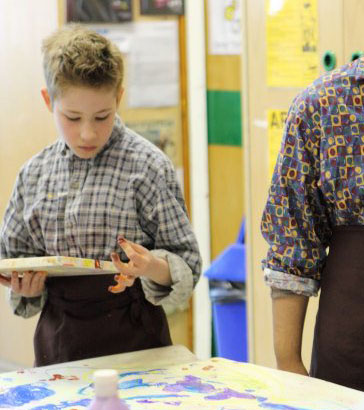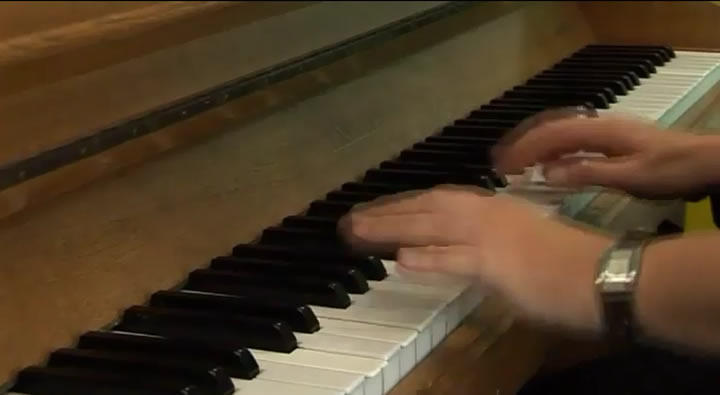
Good practice guidance for the creative arts is rooted in the same principles that are fundamental to all forms of teaching. These are:
For a more detailed description and suggestions for classroom practice read Creative Arts Essentials.
See what interests children have and what activities they are interested in. With group based work, such as drama and dance (and possibly music), you might write a strengths needs chart based on strengths and weaknesses in group dynamics.
Return
The creative arts enable teachers to engage directly with the interests of the learner. A particular art might suit a particular
child. When the teacher establishes such a connection it becomes a
powerful motivator.
Return
Make sure that you consider sensory issues around proximity and noise. Be sensitive to each and every child's needs.
Return
Set up a repeatable routine as an introduction and have a clear and repeatable structure for
each session.
Return
In this clip, a pianist accompanies an interactive
class reading of Jack and the Beanstalk.
What is the function of music in this lesson?
Why is it so effective?
Traditionally, music is used as a virtual medication
by music therapists. They assess the client(s) and
create a clinical plan for treatment that has clear
goals. In this way, the music that the therapist plays
works within a client centred,
goal directed framework.
As the clip demonstrates, music should not just be used as therapy (Lacey (1996) and Peter (1998)).
There should be time for the child with complex needs to explore music and art, not just as a treatment but as a leisure activity that enables them to engage and communicate.

Carpenter, B., Cockbill, B., Egerton, J. and English, J. (2010) Children with complex learning difficulties and disabilities: developing meaningful pathways to personalised learning, The SLD Experience, 58: 3-10.
Hinchcliffe, V. (1996) Fairy stories and children's developing theories of mind, International Journal of Early Years Education, 4 (1) 35-46.
Hinchcliffe, V, (1999) It All Comes Out in the Wash: Using TV 'Soaps' with Pupils with Learning Disabilities in: Fawkes S, Hurrell S and Peacey N (eds) Using Television and Video to Support Learning. London: David Fulton.
Karkou, V. and Glasman, J. (2004) Arts, education and society: the role of the arts in promoting the emotional wellbeing and social inclusion of young people, Support for Learning, 19 (2) 57-65.
Lacey, P. (2010) Smart and Scruffy Targets, The SLD Experience, Issue 57.
Lacey, P. (1996) Music in: Carpenter, B., Ashdown, R. and Bovair, K. (eds) Enabling Access: Effective Teaching and Learning for Pupils with Learning Difficulties, London: David Fulton.

Park, K. and Pilcher, P.J. (2010) Bible stories in Cockney Rhyming Slang, The SLD Experience, 57: 12-15.
Peter, M. (1998) Good for them, or what? The arts and pupils with SEN, British Journal of Special Education, 25 (4) 168-172.
Peter, M. (1998) Accessing the curriculum through the arts for pupils with special educational needs, Support for Learning, 13 (4) 153-156.
Peter, M. (2009) Drama: narrative pedagogy and socially challenged children, British Journal of Special Education, 36 (1) 9-17.
Pilcher, P.J. (2009) Pinocchio by Carlo Collodi, adapted by P.J. Pilcher, The SLD Experience, 54: 13-18.
Sherrat, D. and Peter, M. (2002) Developing Play and Drama in Children with Autistic Spectrum Disorders, London: David Fulton.
